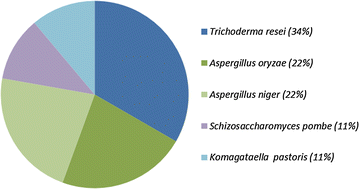Trends in recombinant protein use in animal production
- PMID: 28259156
- PMCID: PMC5336677
- DOI: 10.1186/s12934-017-0654-4
Trends in recombinant protein use in animal production
Abstract
Recombinant technologies have made possible the production of a broad catalogue of proteins of interest, including those used for animal production. The most widely studied proteins for the animal sector are those with an important role in reproduction, feed efficiency, and health. Nowadays, mammalian cells and fungi are the preferred choice for recombinant production of hormones for reproductive purposes and fibrolytic enzymes to enhance animal performance, respectively. However, the development of low-cost products is a priority, particularly in livestock. The study of cell factories such as yeast and bacteria has notably increased in the last decades to make the new developed reproductive hormones and fibrolytic enzymes a real alternative to the marketed ones. Important efforts have also been invested to developing new recombinant strategies for prevention and therapy, including passive immunization and modulation of the immune system. This offers the possibility to reduce the use of antibiotics by controlling physiological processes and improve the efficacy of preventing infections. Thus, nowadays different recombinant fibrolytic enzymes, hormones, and therapeutic molecules with optimized properties have been successfully produced through cost-effective processes using microbial cell factories. However, despite the important achievements for reducing protein production expenses, alternative strategies to further reduce these costs are still required. In this context, it is necessary to make a giant leap towards the use of novel strategies, such as nanotechnology, that combined with recombinant technology would make recombinant molecules affordable for animal industry.
Keywords: Animal production; Fibrolytic enzymes; Recombinant expression systems; Recombinant proteins; Reproductive hormones; Therapeutic molecules.
Figures
References
Publication types
MeSH terms
Substances
LinkOut - more resources
Full Text Sources
Other Literature Sources



